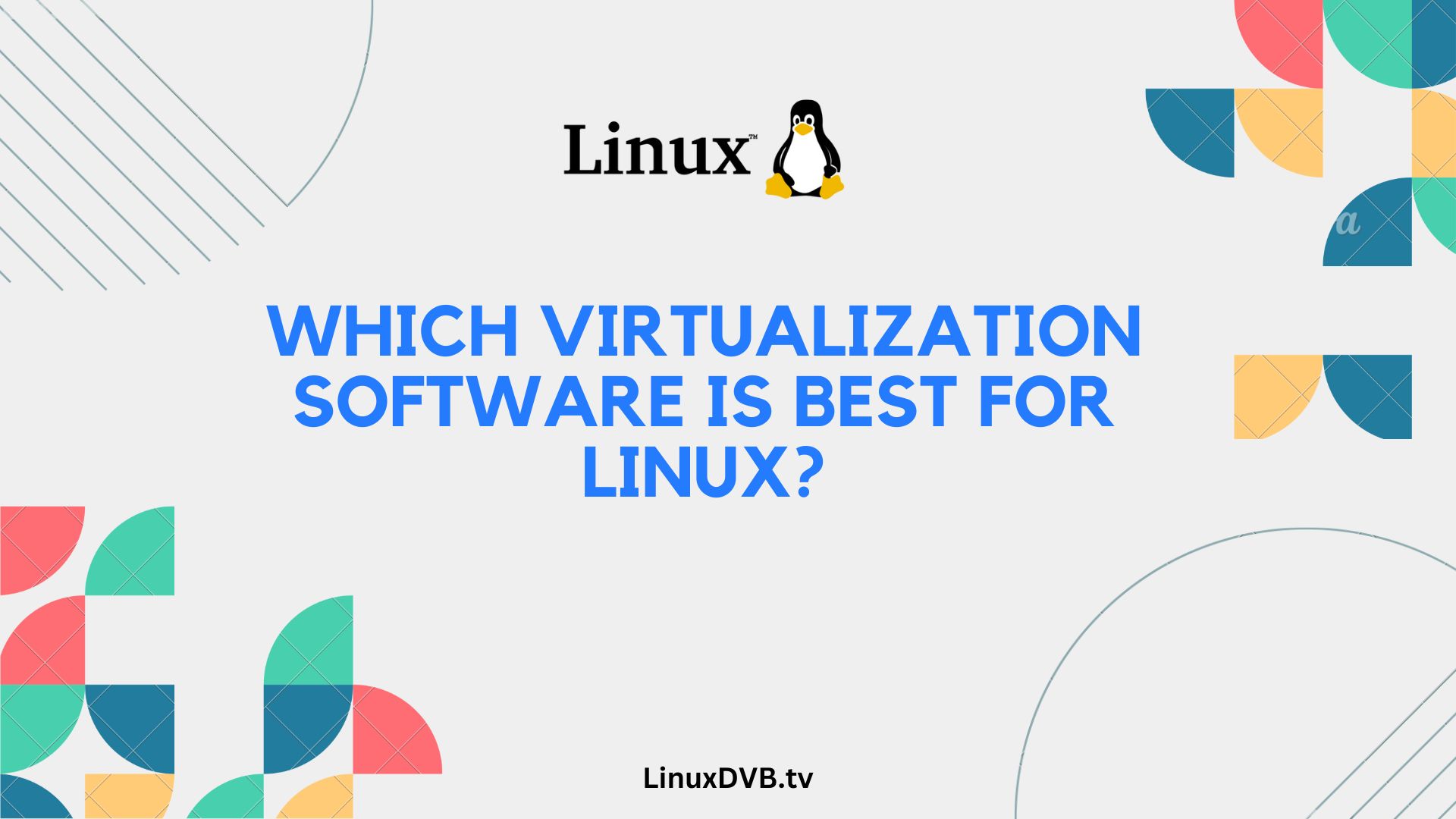Introduction
When it comes to virtualization on the Linux operating system, choosing the right software is crucial. Whether you’re a seasoned Linux user or just getting started, finding the best virtualization solution can significantly impact your productivity and efficiency. In this in-depth guide, we will explore various virtualization software options available for Linux. We’ll help you make an informed decision by providing expert insights, real-world experiences, and answers to your most pressing questions.
Table of Contents
Understanding Virtualization
Virtualization is the process of creating a virtual version of a physical resource, such as a computer or server. It allows you to run multiple operating systems or applications on a single physical machine, maximizing resource utilization and efficiency.
Why Choose Linux for Virtualization?
Linux is a popular choice for virtualization due to its stability, security, and open-source nature. It provides a robust platform for hosting virtual machines and containers.
Comparing Virtualization Software
There are various virtualization solutions available for Linux, each with its own strengths and weaknesses. Let’s compare some of the top contenders.
Key Factors to Consider
When evaluating virtualization software, consider factors like performance, scalability, ease of use, and support for your specific use case.
Popular Virtualization Solutions for Linux
Explore popular virtualization software options, including VirtualBox, KVM, VMware, and more.
Setting Up Virtualization on Linux
Learn how to set up virtualization on your Linux system, whether you’re using Ubuntu, CentOS, or another distribution.
Performance and Resource Management
Optimizing performance and efficiently managing resources are critical aspects of successful virtualization.
Security Considerations
Discover best practices for securing your virtualized Linux environment to protect against potential threats.
Virtualization for Development and Testing
See how virtualization can benefit software development and testing workflows.
Virtualization for Servers
Explore the use of virtualization in server environments, enabling better resource allocation and management.
Containers vs. Hypervisors
Understand the differences between containerization and hypervisor-based virtualization and when to use each.
Docker and Kubernetes for Linux
Learn about container orchestration with Docker and Kubernetes, two popular tools for managing containers on Linux.
Managing Virtual Machines
Get insights into efficiently managing virtual machines, including snapshots, cloning, and live migrations.
Networking in Virtual Environments
Explore networking considerations when working with virtual machines and containers on Linux.
Backup and Recovery
Discover strategies for backing up and recovering virtualized environments to ensure data integrity.
Scaling Your Virtualized Infrastructure
Learn how to scale your virtual infrastructure to meet growing demands.
Cost Analysis
Consider the cost implications of different virtualization solutions and choose the most cost-effective option.
User-Friendly Interfaces
Evaluate the user interfaces and management tools provided by virtualization software.
Troubleshooting Common Issues
Find solutions to common virtualization problems and challenges that Linux users may encounter.
Community Support and Documentation
Tap into the Linux community for support and access comprehensive documentation resources.
Upcoming Trends in Linux Virtualization
Stay informed about emerging trends and technologies in the world of Linux virtualization.
FAQs About Virtualization on Linux
Can I run Windows applications on Linux using virtualization?
Yes, virtualization software like VirtualBox and VMware allows you to run Windows applications on a Linux system.
Is KVM a type-1 or type-2 hypervisor?
KVM (Kernel-based Virtual Machine) is a type-1 hypervisor, as it runs directly on the host’s hardware.
Which virtualization solution offers the best performance for gaming on Linux?
Many users find that using Wine or Proton for gaming on Linux is more efficient than traditional virtualization.
Are there any free and open-source virtualization options for Linux?
Yes, several open-source options, such as VirtualBox and QEMU, provide free virtualization solutions for Linux.
Can I use virtualization to run multiple Linux distributions simultaneously?
Absolutely, virtualization allows you to run multiple Linux distributions concurrently for testing or development purposes.
What are the system requirements for running virtualization software on Linux?
System requirements vary depending on the software, but generally, you’ll need a modern CPU with virtualization extensions and ample RAM.
Which virtualization software is best for Linux?
The choice of virtualization software for Linux depends on your specific needs, but popular options include KVM/QEMU, VirtualBox, and VMware.What type of virtualization supported by Linux?
Linux supports various types of virtualization, including hardware virtualization (KVM), container-based virtualization (Docker), and paravirtualization (Xen).Conclusion
In the world of Linux virtualization, choosing the right software can make all the difference. By carefully considering your specific needs and exploring the options available, you can harness the power of virtualization to enhance your Linux experience. Remember that the choice of virtualization software should align with your goals, whether you’re a developer, server administrator, or simply an enthusiastic Linux user. With the right software and knowledge, you’ll unlock a world of possibilities on your Linux journey.

